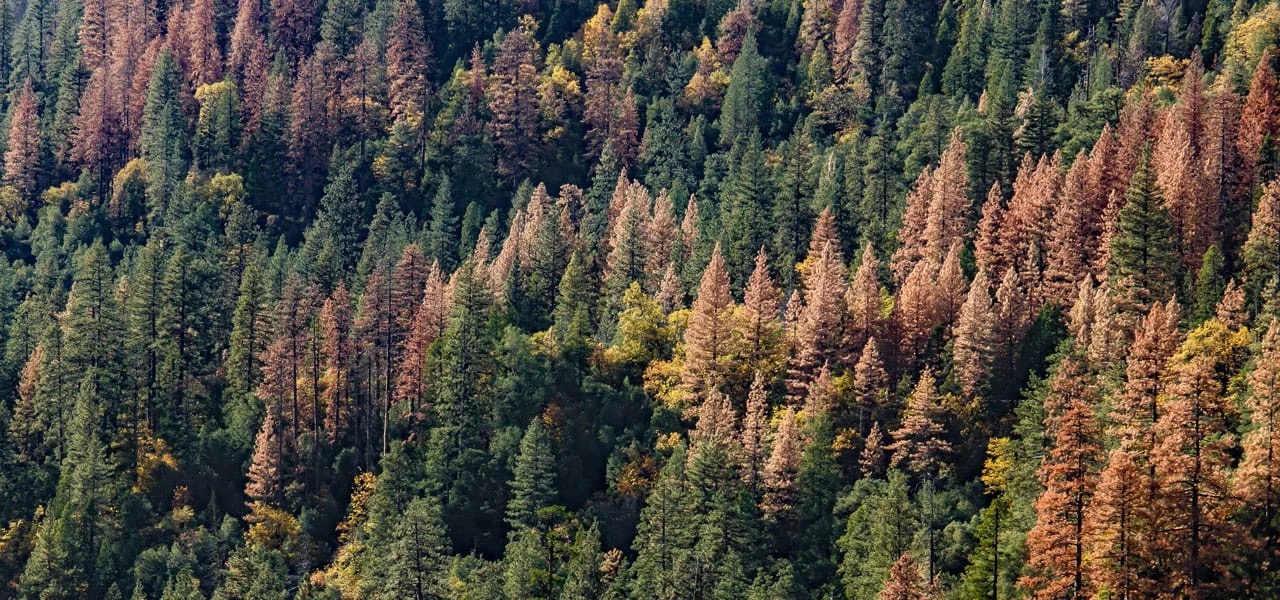From the LAM Archives – July 2002
When I looked to the southwest from Bergen Park in the early afternoon on Sunday May 5th, I knew right away the plume of smoke wasn’t coming from any of the usual places in the Bailey or Buffalo Creek areas. This one was closer to home.
By Monday afternoon I had already received over a hundred calls from people who wanted trees cut down near their homes – now! The Black Mountain blaze of May 2002 has given the residents of Evergreen and surrounding areas a new urgency to create defensible spaces near their homes.
In the weeks since the fire I’ve encountered dozens of people who want all the trees removed from around their homes. On the other side of the spectrum there are the people who have their heads in the sand, who claim they will “just move because everything will be burned anyway.” Common sense dictates a course somewhere in between these two opposing views.
Let’s back up a little bit and look at the bigger picture. Forest fires are a normal and healthy part of any forest. Throughout history, fires periodically raged through the front range of Colorado. Only in the past one hundred plus years have we altered nature by suppressing every fire that breaks out. This suppression has caused an unnatural buildup of combustible fuels in the forest.
One hundred and fifty years ago most of our forest here in Evergreen consisted of large Ponderosa Pines often separated by fifty feet or more. Fires would burn everything except the strongest pines with the most heat resistant bark. After all these years of fire suppression, we are now faced with a crowded and unhealthy forest.
To complicate matters we have built our homes in the midst of the fuel. Add a one hundred year drought and we find ourselves in a scary situation here in the summer of 2002.
So what does a concerned mountain dweller do?
I believe we must try to simulate the forest fires of the past, at least to a small degree. What I mean by this is that we must take it upon ourselves to reduce some of the fuels that the fires previously reduced.
Most of us have heard the term “defensible space” by now, but what exactly does it mean?
When a fire is threatening mountain homes the firefighting agencies will triage the situation to determine which homes they will attempt to save. Homes with less fuel near them will have a better chance of being saved.
Removing mature trees near your home isn’t necessarily the best method. Thinning of crowded trees and removing ladder (lower) fuels farther from the house can be very effective also. For those of you who belong to the “I’m moving anyway if it burns” school, keep in mind that your insurance company may not agree with your plan. Some insurance policies will only help you rebuild at your current site. Other policies may not even go that far. Check with your insurance agent. Also, you might want to take a look at the Snaking Fire site or Hi Meadow Fire site. You’ll see that only certain areas are completely scorched and many areas in the heart of the fire zone are quite habitable. Lastly, when you think long and hard about it, you probably don’t really want to be uprooted – it’s very traumatic. For those of you who want to cut down all the trees around your home, including all of your two hundred year old pines, consider this: You can accomplish a lot by thinning out crowded parts of your forest, removing “ladder” fuels and removing selected trees and shrubs near your home. There are also other ways to reduce your wildfire risk, such as replacing your shake shingle roof with a non‐ combustible type, and locating propane tanks away from trees and shrubs. It’s a scary time to be living in our dry forest. We need to avoid being in denial and also avoid overreacting. Let’s use common sense.



